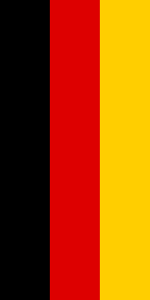As simplistic as the egg may appear, the more astounding it is in regard to geometry, consistency and nutrient content.
EiTHRON
What is the egg? As the egg is built?

Das Außen
- Eggshell
- Outer membrane
- Inner membrane
- Chalaza
- Exterior albumen
- Middle albumen
- Vitelline membrane
- Nucleus of pander
- Germinal disc (nucleus)
- Yellow yolk
- White yolk
- Internal albumen
- Chalaza
- Air cell
Das Innen
The egg white consists of water (87 %), protein (11 %), carbohydrates (1 %) and minerals (1 %); the egg yolk consists of water (50 %), fat (32 %), protein (16 %) and minerals (2 %).
The average chicken egg contains 80 calories and 8 grams of fat; half of the latter is mono or polyunsaturated fat. It supplies all essential amino acids for humans, and provides several vitamins and minerals, including Retinol (Vitamin A), Riboflavin (Vitamin B2), Folic Acid (Vitamin B9), Vitamin B6, Vitamin B12, Choline, Iron, Calcium, Phosphorus and Potassium. Eating an egg covers 35 % of your recommended daily intake of Vitamin D and 38 % for Vitamin B12. All nutrients are stored in the egg yolk and white, with the yolk having the bigger share. Generally speaking, it doesn’t make much difference whether you eat the egg raw or boiled.
The chicken’s diet has a dramatic impact on the nutritional value of the egg. Chickens that aside from getting fed with seeds, have access to crops, insects, worms and snails, lay eggs with higher nutritional value. Studies confirm that in comparison to chicken that only have been fed with seeds, the eggs contain 2/3 more Vitamin A, twice as many Omega 3 acids, three times the amount of Vitamin E, 4 to 6 times more Vitamin D, 7 times more Beta-Carotene, and a third less cholesterol and less saturated fat acids.
Contact | Conditions | Disclaimer | Privacy Policy

